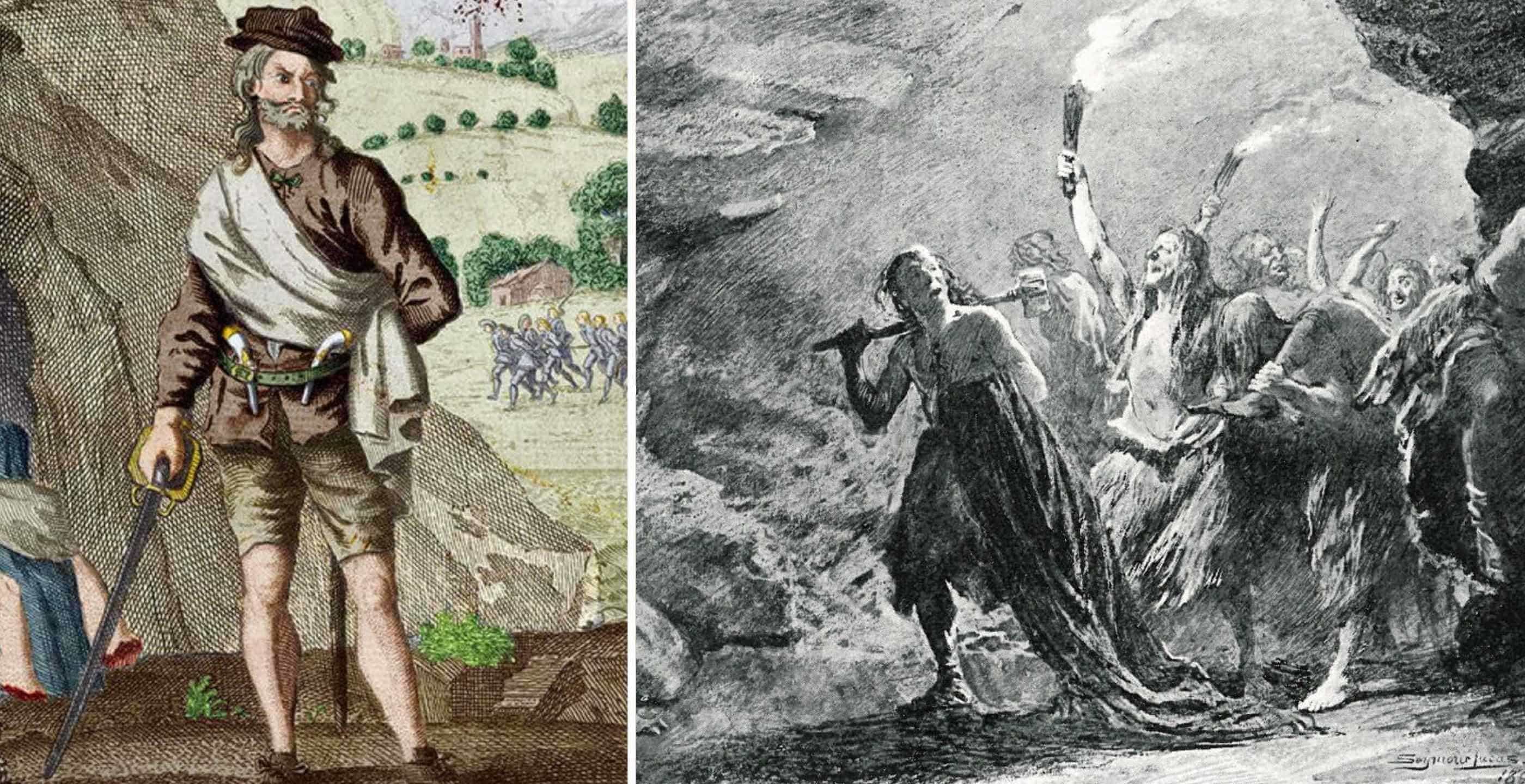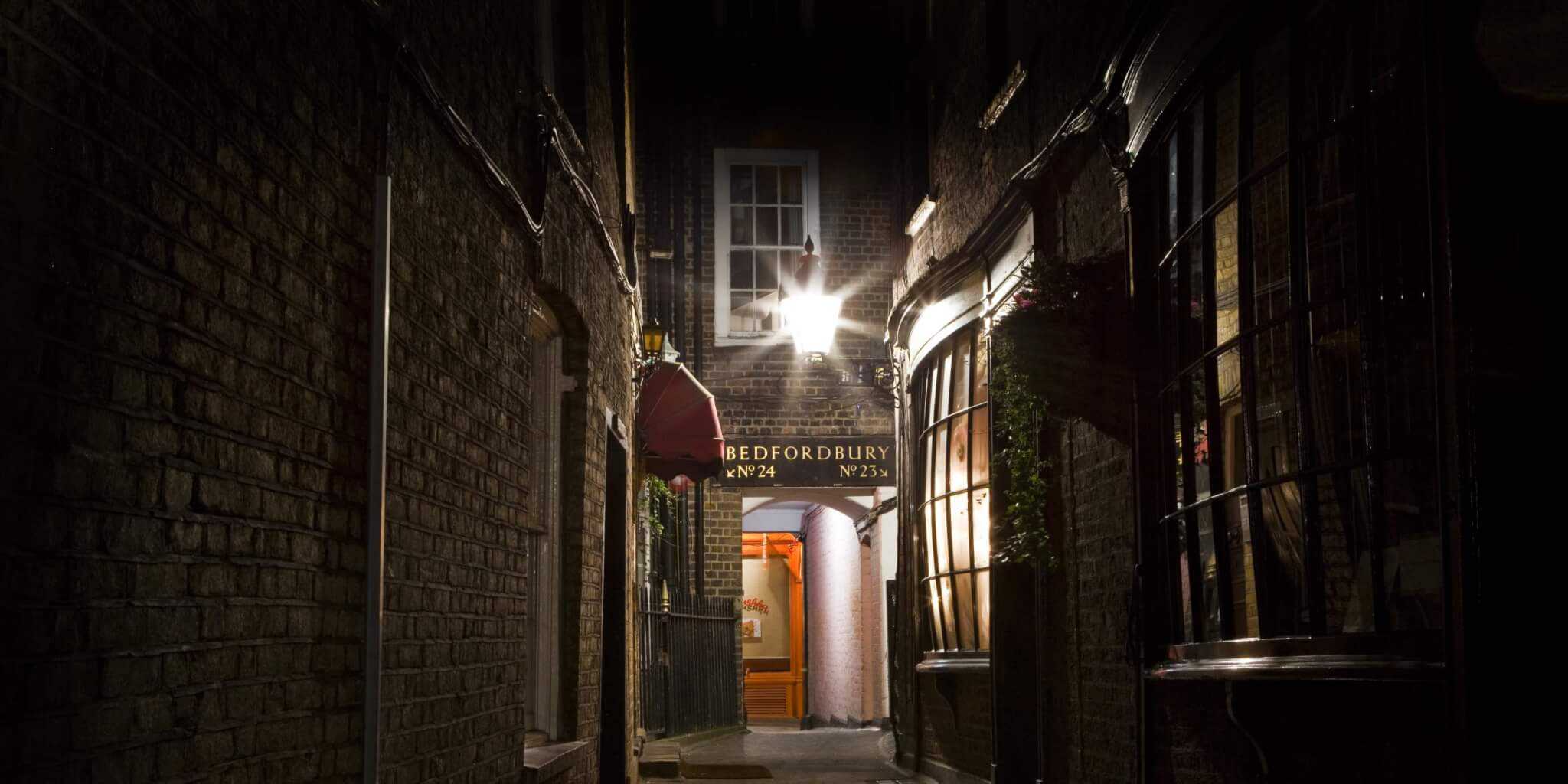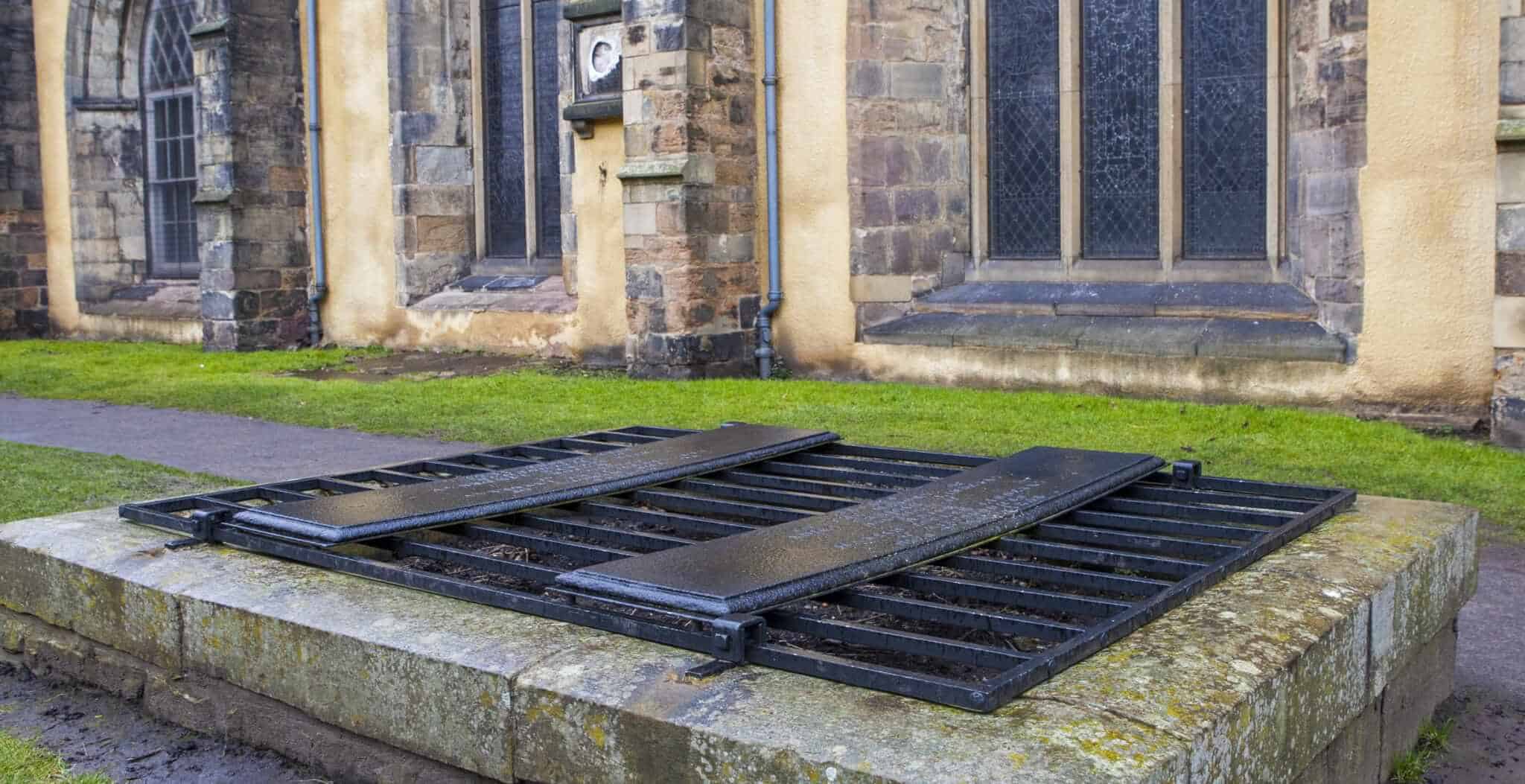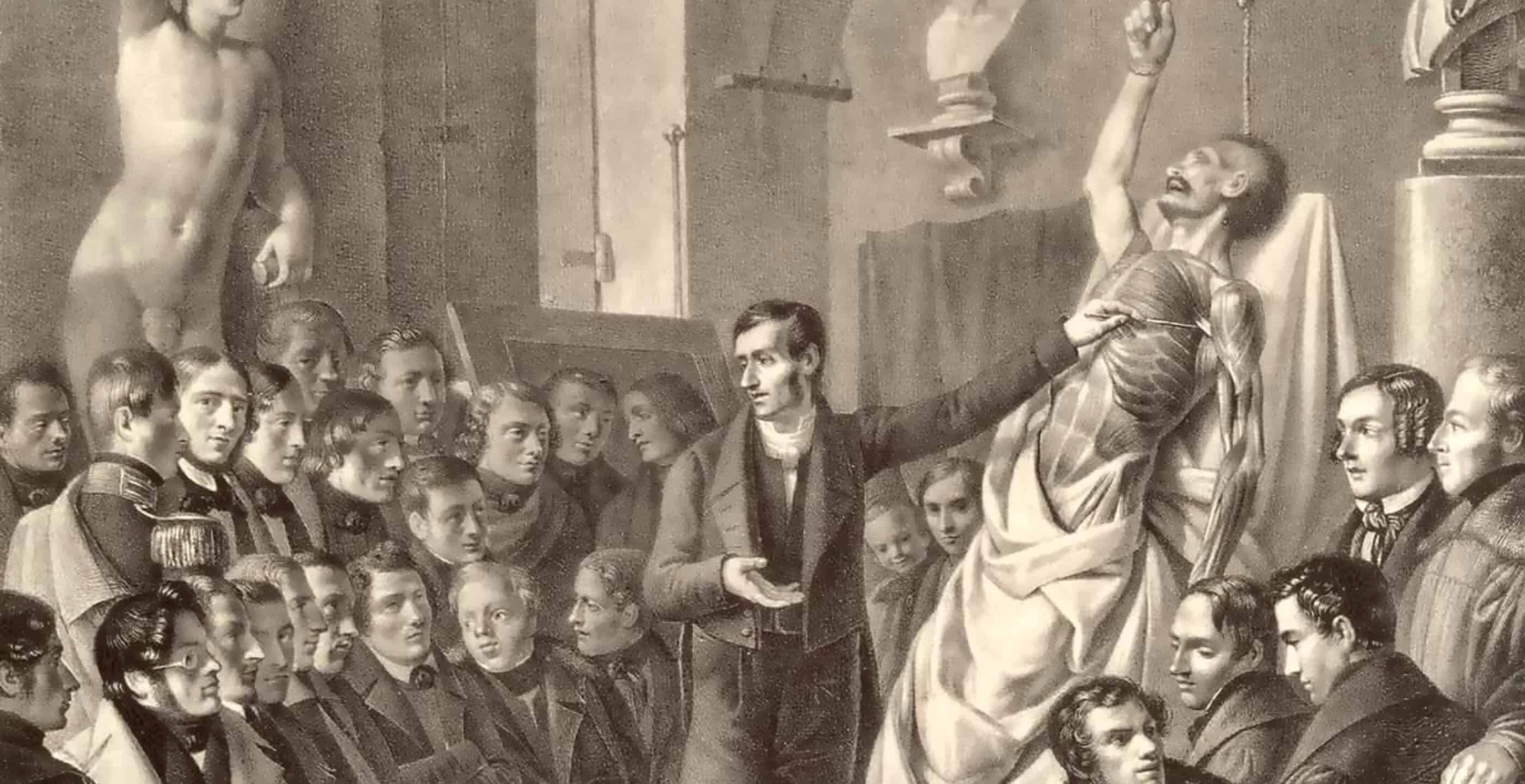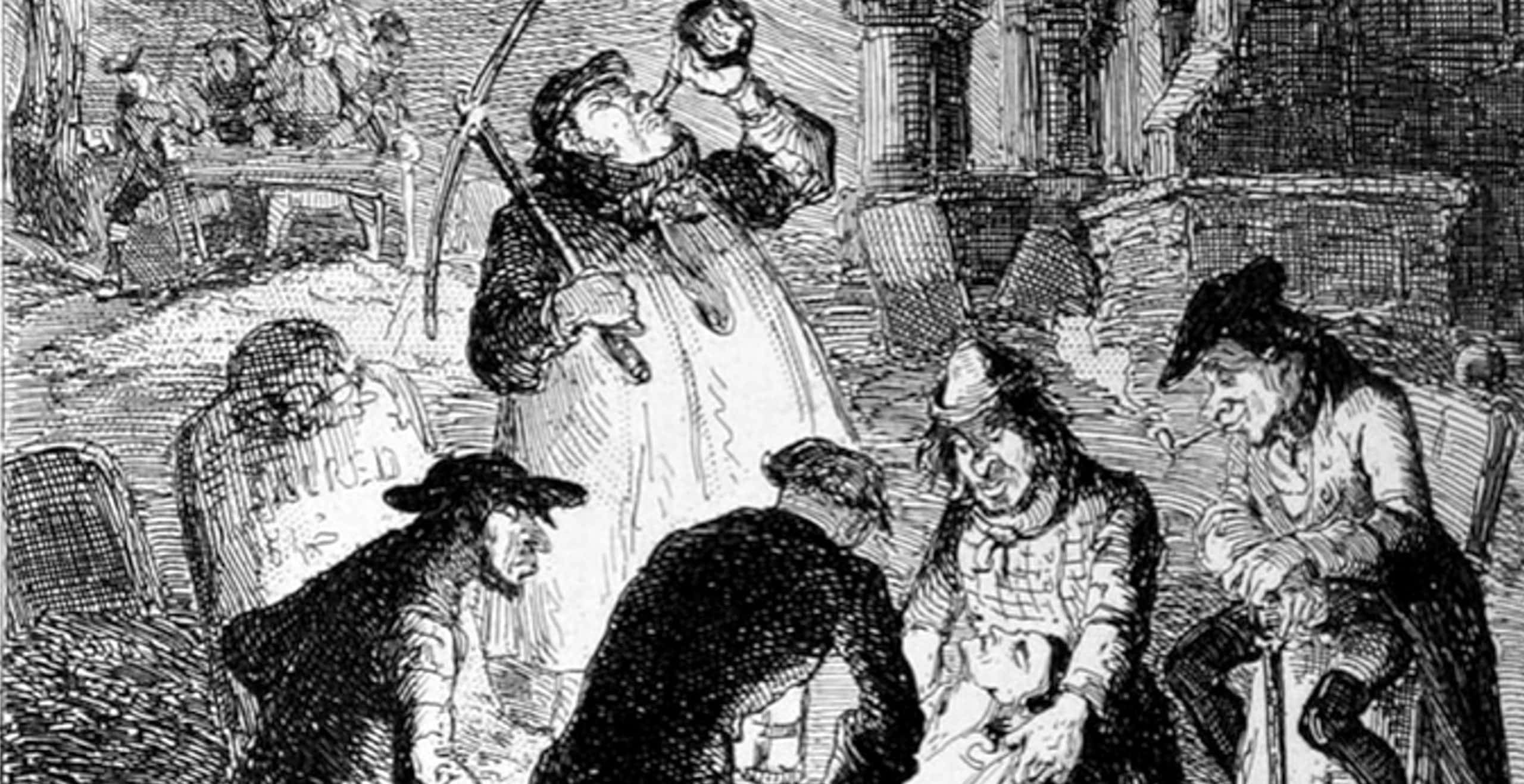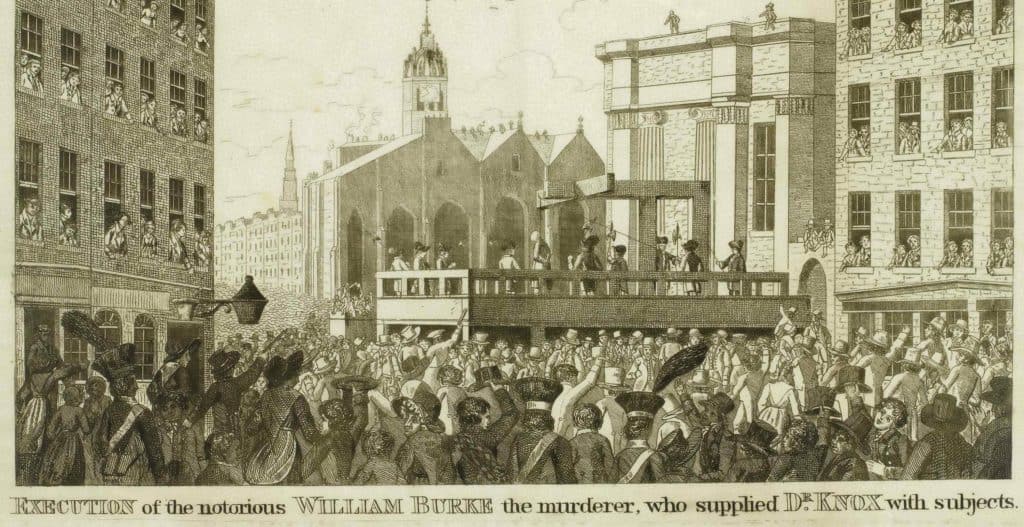Five particularly gruesome Hollywood blockbuster films have featured a character known as Hannibal Lecter, otherwise known by his descriptive nickname Hannibal the Cannibal. If legend is to be believed however, when compared with the exploits of one Mr Sawney Bean, it may appear more appropriate to rename him Hannibal the pussycat.
Little is known for certain about his early life, however Sawney Bean is believed to have been born in East Lothian in the late 15th century, and was a tanner by trade. The latter part of his life is a little better documented following his relocation across country to Ayrshire and his marriage.
The newly wed Mr and Mrs Sawney Bean set up home at Bennane Cave, by Ballantrae in Ayrshire, Scotland. Bennane Cave was rather an imposing abode, with tunnels penetrating the solid rock and extending for more than a mile in length. In addition, the accommodation featured lots of side passages where a young couple could extend into, and convert over the next 25 years, to accommodate a growing family. The cave’s entrance was flooded for several hundred metres, twice a day at high tide, a nice draught exclusion feature!
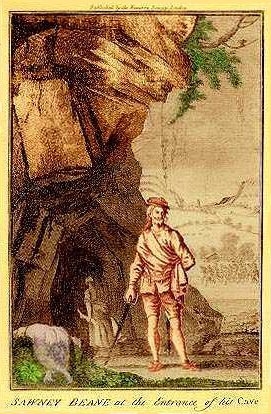 Lacking a trade, it was Sawney’s plan to support his new wife on the proceeds of robbery. It proved a simple enough matter to ambush travellers on the lonely narrow roads that connected the villages of the area. Then it dawned on him that in order to help make sure that he could never be identified for his crimes, he should murder his victims. To avoid those unnecessary visits to the shops for provisions whilst at the same time disposing of any evidence, he came on the bright idea of butchering the bodies to provide a high protein diet of human meat for himself and his wife.
Lacking a trade, it was Sawney’s plan to support his new wife on the proceeds of robbery. It proved a simple enough matter to ambush travellers on the lonely narrow roads that connected the villages of the area. Then it dawned on him that in order to help make sure that he could never be identified for his crimes, he should murder his victims. To avoid those unnecessary visits to the shops for provisions whilst at the same time disposing of any evidence, he came on the bright idea of butchering the bodies to provide a high protein diet of human meat for himself and his wife.
The high protein diet seemed to have been effective as Mrs Bean began to produce little baby Bean’s. Fourteen little Beanie babies in total, each with a very unhealthy appetite for human flesh. As the Beanie babies grew up and in turn, through incest, produced Beanie babies of their own, their cooking pots increased in size dramatically. Over two decades, generations of Beanie babies grew up in Bennane Cave, refining their skills of murder and cannibal cuisine including, the now lost art of salting and pickling the flesh. Finds of curiously preserved but decaying body parts were discovered washed up on the surrounding beaches in the area.
The local authorities had by now established what must have been, and what must still be to this date, the longest missing persons list ever produced. Although mass searches of the area were carried in order to locate either the missing people or their murderers, nobody ever thought to search the depths of Bennane Cave.
As the years went by the family grew older and thanks to their high protein diet, bigger. And as the family grew so did their appetite. As many as half a dozen victims would be ambushed and killed at a time in military style operations by the Sawney Bean army. The bodies were taken back to the cave to be carefully prepared for the larder by the women folk.
Even in the best-planned operations however, things sometimes go wrong. It happened one evening for the Sawney Bean army, when they attacked a man and his wife as they were returning home from a nearby fair. One group pulled the woman from her horse and had her stripped and disemboweled before the other group had chance to wrestle the man to the ground. Realising the fate that was about to fall him he fought desperately to escape, driving his horse into and over his attackers. As he fought for his life, a group of twenty or so people also returning from the fair happened upon the scene. After a brief and violent exchange the Sawney Bean army found itself, for the first time ever, at a numerical disadvantage and promptly retreated back to the cave to consider this situation. As they retreated they left behind the mutilated body of a woman as evidence, a score of witnesses and one very angry husband.
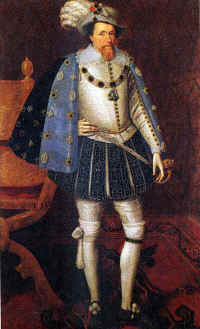 The man was taken before the Chief Magistrate of Glasgow, who after hearing the tale and putting this together with his longest missing persons list ever and the many reports of the mysterious pickled body parts, decided to take the matter straight to the top. King James I promptly arrived in Ayrshire with a small army of four hundred men and a pack of tracker dogs, and together with a band of local volunteers, launched one of the biggest manhunts the country had ever seen.
The man was taken before the Chief Magistrate of Glasgow, who after hearing the tale and putting this together with his longest missing persons list ever and the many reports of the mysterious pickled body parts, decided to take the matter straight to the top. King James I promptly arrived in Ayrshire with a small army of four hundred men and a pack of tracker dogs, and together with a band of local volunteers, launched one of the biggest manhunts the country had ever seen.
Like before, the search extended through the Ayrshire countryside and coastline and like before, nothing was discovered. That was however, until the dogs picked up the scent of decaying human flesh whilst passing a partly waterlogged cave. The manhunt was closing in!
By torchlight the troops entered Bennane cave and with swords drawn, they proceeded down the mile-long twisting passage to the inner depths of the Sawney Bean family lair. Nothing could have prepared them for the sight they witnessed that day. The damp walls of the cave were strewn with row upon row of human limbs and body parts, like meat hanging in a butchers shop. Other areas of the cave stored bundles of clothing, piles of watches and rings and heaps of discarded bones from previous feasts.
After a brief fight, the entire Sawney Bean family, all forty-eight of them, were arrested and marched off to Edinburgh by the King himself. Their crimes were considered so heinous that the normal justice system, for which Scotland is so renowned, was abandoned and the entire family were sentenced to death. The following day the twenty-seven men of the family met a fate similar to that of many of their victims, by having their legs and arms cut off and being left to slowly bleed to death, watched by their women. The twenty-one women were burned like witches in huge fires.
And so the ballad of Sawney Bean records their end:
They’ve hung them high in Edinburgh toon
An likewise a their kin
An the wind blaws cauld on a their banes
An tae hell they a hae gaen.*
Please note however that although the tale of Sawney Bean and his infamous family is recorded in several notable publications, factual documentation is lacking to validate the events.
* From “The Ballad of Sawney Bean” – Music and Lyrics
by Lionel McClelland. Published by Limetree Arts and Music. UK
